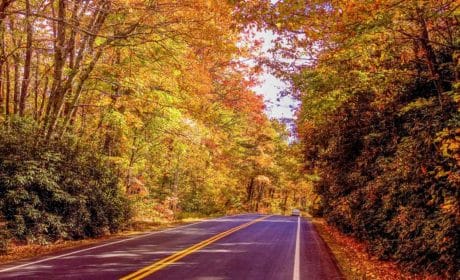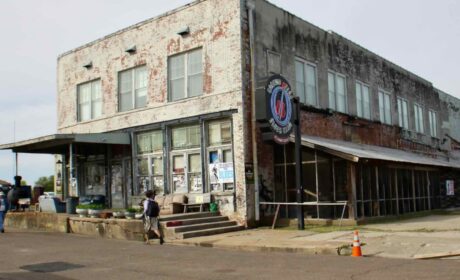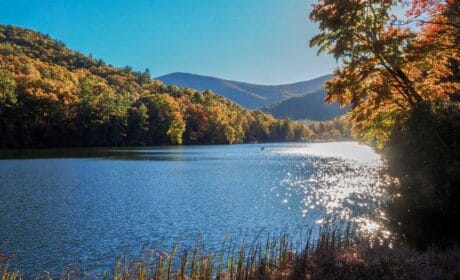Is a scenic drive from Savannah to Charleston calling your name? As boomers retire to the South Carolina and Georgia coast, this charming region of the South is attracting more attention.
Although it may not receive the same amount of recognition as say, the California coast, for example, the southeast coastal area of the United States, known as the Lowcountry, is a spectacular place for a road trip. Charleston and Savannah are especially intoxicating, filled with vibrant history, charming architecture, and of course, incredible local cuisine.
Yes, there is much to be seen on a lowcountry road trip from Savannah to Charleston. Thankfully, our featured contributor, Debi Lander from ByLanderSea, offers us tips on how to make the most of this amazing baby boomer adventure.
Table of Contents
Where is the Lowcountry?

No surprise that Charleston and Savannah rank among the top tourist destinations in America. Charleston, South Carolina, entices visitors with its architectural wonders, fascinating history and genteel southern hospitality. The city is downright seductive; she’s got an attitude and a million stories.
So does neighboring and equally alluring Savannah, Georgia. Both belong to the Lowcountry, the marshy land bordering the Atlantic Ocean in the southeastern United States.
Imagine brick townhouses and grand homes where wraparound front porches offer rocking chairs, the perfect place to sip sweet tea. If you can rouse yourself from such bliss, shrimp boats and ferries, steeples, spires, gardens and gates beckon. The smell of salty air, a sweaty brow, and pungent barbecue pass your nose.
South Carolina and Georgia, both members of the original 13 colonies, have a proud history of independence, but memories of slavery and the Civil War remain strong. The mix creates a destination worth exploring.
Come hear their tales as I explore these cities. Discover other highlights, too, on a Savannah to Charleston road trip through the Lowcountry.
Sultry Savannah, Georgia

Let’s start in sultry Savannah, easily accessible by air or a two-hour drive from Jacksonville, Florida. English General James Oglethorpe founded Savannah as Georgia’s first city in 1733.
Today, she stands with sophisticated style: iron fences and balconies, similar to those in New Orleans, adorn historic homes; 22 of the original 24 green squares provide park-like settings and aged live oaks drip with Spanish moss. This river city teases with tales of murder and ghosts.

Savannah’s historic district is divided into a grid. Begin at the visitor center, where you can hop on a tour bus or trolley (here’s how to purchase in advance) to get a feel for the place and a sense of the past.

Stroll around the famed Forsyth Park Fountain or browse high-end antique shops, quirky boutiques and art museums. Fans of John Berendt’s Midnight in the Garden of Good and Evil will delight in touring sites from the book and movie, including the Mercer Williams House where you’ll only see the first floor, but is still worthwhile. Many enjoy the serene statuary in tombstone-filled Bonaventure Cemetery.

Don’t miss the riverfront area and Savannah’s Cotton Exchange, built in 1872 when export revenue from cotton was $40 million and Georgia was the leading cotton producer in the country. By the 1880s, the area became known as the “Wall Street of the South.” Ironically king cotton was brought down by the tiny boll weevil, rendering the building obsolete by 1920.

Get in line early to dine at Mrs. Wilkes Dining Room; a former boardinghouse that dishes such a bountiful lunch it lasts all day. Another favorite, Olde Pink House, serves elegant southern cuisine and sports a lively barroom in the basement.
If you want to splurge on lodging, check into the modern Mansion on Forsyth Park, now the Hotel Bardo Savannah, or consider numerous, antique-adorned bed-and-breakfast inns at Historic Inns of Savannah. Weather permitting; a riverboat cruise becomes another fun activity.

Boomer Travel Tip
Looking for places to stay in Savannah? Start your search for hotels in Savannah with us!
What to see in Tybee Island

Neighboring Tybee Island, a 20-minute drive, bespeaks an altogether different aura; she tempts visitors with tiny raised cottages, marsh grass, tidal beaches and sea breezes. Where Savannah oozes Southern charm and elegance, Tybee prefers laid back relaxation.
Tybee’s claim to fame is Fort Pulaski, where a famous Civil War battle occurred, and Tybee Lighthouse, the tallest lighthouse in Georgia. Sign-on for deep-sea fishing charters, perhaps a dolphin cruise, rent a bike or kayak, bird-watch, surf or simply rest on her five miles of sandy dunes.
Boomer Travel Tip
Make your headquarters at Tybee Island by renting one of the cute cottages.
Historic Beaufort, South Carolina

Move along to Beaufort, SC, pronounced as the locals say, “Like beautiful—Beaufort.” Beaufort lies just 40 miles from Savannah and 70 miles from Charleston.
The city, founded in 1711, was overtaken by Union troops during the Civil War. The soldiers found the place so lovely; they spared the buildings from destruction. Many of the mansions acted as wartime hospitals.
A scenic walking or carriage tour in the downtown area won’t include all 304-acres listed in the National Historic Register, but you’ll pass sites from the iconic Hollywood movies: The Big Chill, The Great Santini and Forest Gump.
Literary fans of hometown Pat Conroy will relish a stop in the new Pat Conroy Literary Center and the special Pat Conroy Literary tour. Beaufort’s arsenal looks like a castle with gothic church windows.
Beaufort was home to Robert Smalls, a riveting figure I learned about on my recent trip to the city. Born into slavery, Smalls freed himself, his crew, and their families during the Civil War by commandeering a Confederate transport ship in Charleston harbor.
He sailed the boat from Confederate-controlled waters of the Union-controlled enclave in Beaufort-Port Royal-Hilton Head area, where it became a Union warship. His example helped convince President Lincoln to accept African-American soldiers into the Union Army.
After the Civil War, Smalls returned to Beaufort and became a politician, winning election to the SC State legislature and the U.S. House of Representatives during the Reconstruction era. Smalls authored legislation providing South Carolina the first free and first compulsory public school system in the United States.

If possible, book a tour to nearby islands for a Gullah or Gullah Geechie (African-American) cultural tour. Many Gullah still live in small farming and fishing communities on the chain of Sea Islands that runs parallel to the coast.
Because of their geographical isolation and strong community life, the Gullah have been able to preserve more of their African cultural heritage than any other group of Black Americans. They speak a creole language, use African names, tell African folktales, make African-style handicrafts such as sweetgrass baskets, and enjoy a rich cuisine based primarily on rice.
They were, in fact, responsible for the successful rice production in the South. You may also wish to enroll in a Gullah cooking class at the Gullah Grub restaurant in Beaufort.

Just outside of Beaufort, you’ll find one of the newest National Park sites: Penn Center originally called Penn School, established in 1862 as the first school in the South for former slaves. President Barack Obama issued a proclamation in January 2017 establishing the Reconstruction Era National Monument in Beaufort County.
The historic sites include Penn Center’s Darrah Hall and Brick Baptist Church on St. Helena Island and the Camp Saxton site in Port Royal—along with the Old Beaufort Firehouse in the Beaufort National Historic Landmark District in downtown Beaufort.
While visiting Beaufort, I stayed in and highly recommend the gracious Beaufort Inn, a boutique hotel with lovely balconies, patios and gardens.

Charleston, Queen of the Lowcountry road trip

Our road trip has finally arrived in Charleston, queen of the Lowcountry. A day is not enough time to explore Charleston’s charms, but if that’s all the time you have, make the most of it!
If your budget permits (warning: the destination is pricy), spend a few days to a week. There’s so much to see and do in this charming, southern city.

Food and drink are an essential component of a Charleston lifestyle as clearly displayed on a sign gracing a storefront: Cocktails! Because no great story ever started with a salad. Visitors will find a nearly endless supply of watering holes and restaurant options from upscale fancy to hole-in-the-wall eateries.
Charleston’s oldest independent dining establishment, Poogan’s Porch serves seasonal, refined Lowcountry cuisine in a restored Victorian home on Queen Street.
Fig, an upscale bistro, always ranks among the top restaurants. Be sure to try their cornbread and soft shell crabs, if in season.
The cocktail and craft beer scene offers too many choices to list! Did I mention the College of Charleston fits snugly into the downtown area?

Whether you opt for a walking tour, carriage tour or simply meander around, make your way to Rainbow Row on East Bay Street. The series of 13 brightly colored houses along the waterfront beckon as one of Charleston’s most photographed spots.

While the architecture and beautiful pastel coloring are to be admired, Rainbow Row wasn’t always captivating. After the Civil War, this area was considered a slum. Not until 1931, when Dorothy Porcher Legge and her husband Judge Lionel Legge purchased the section of houses, did improvements begin.

If you are attracted to beautiful doors, gates and church steeples, you’ll encounter many along the Holy City’s historic Battery promenade and Waterfront Park overlooking the harbor.
Fort Sumter National Park Memorial site, the federal stronghold where the first shots of the Civil War rang out, lies offshore. You’ll need to take the National Park ferry to get there but do visit.
History buffs may also want to include the Charles Towne Landing site, a tidal channel where the first expedition of English settlers arrived in 1670. Today you can explore 664-acres filled with majestic oak trees.
A number of historic and tour-worthy plantations rest about 20-30 minutes drive out of the city on Ashley River Road. Here, I chose to visit Magnolia Plantation and Gardens. The 30-minute house tour quickly covered the 300-year ancestry of the home and Drayton family.
I exited the back door, really the front door as it faces the Ashley River, and walked down a path to the landing. I felt the presence of the prosperous Old South but tried to remember the slave population that made it possible.
In 2023, the new International African-American Museum (IAAM) (website here) is scheduled to open paying homage to Charleston as the place where more enslaved African captives arrived in the U.S. and were sold than any other location.

I moved my car from the mansion house to the entrance of the 60-acre Audubon Swamp Garden. There, I crossed onto a wooden boardwalk over green-slimy water brimming with duckweed.
I was lured by the calmness and tranquility of birdcalls. Back and forth, I heard twitters and tweets – the real kind from the ornithological species. I listened to frogs croaking and crickets.
Boomer Travel Tip
Discover the best places to stay in Charleston.
Roadtripping beyond Charleston
A Savannah to Charleston road trip provides an intoxicating glimpse of the Lowcountry. But there’s so much more.
I recommend that you keep driving north to experience Georgetown, Huntington State Park and Pawley’s Island. That’s what I did.
Finding rice plantation history: Georgetown, South Carolina
Georgetown, South Carolina, presented itself as one of the most captivating small towns I’ve toured. Though compact and easy to walk, Front Street offers five museums including a Rice Museum, Gullah Museum and the elegant Kaminsky House, circa 1769, on the banks of the Sampit River.
Actually, Georgetown is the spot where four rivers—the Wacamaw, Black, Sampit and Pee Dee—converge.

Rice plantations flourished in the area and by 1840, the region produced nearly one-half of the total rice crops of the United States. Hard to believe, but little Georgetown’s port exported more rice than any port in the world. The local variety called “Carolina Gold” was in demand worldwide.
This labor-intensive crop provided great riches for the planters but meant backbreaking work for the slaves, the Gullah population. Rice plantation workers in the South Carolina Lowcountry afforded their masters the highest per capita income in the American colonies.
The plantation owners continued to earn huge profits up to the Civil War. Eventually, saltwater infiltrated the fields and halted production.
Today, downtown Georgetown delights shoppers and its Harborwalk or wharf area brings scenic dining opportunities. I recommend the Old Fish House, aka Big Tuna, a fun restaurant.

Boomer Travel Tip
Discover where to stay in Georgetown, SC.
Huntington State Park: Atalaya Castle and Brookgreen Gardens
Head on to Huntington Beach State Park where Atalaya Castle, more a folly than a castle, takes the starring role. The wealthy and eccentric couple, Archer and Anna Huntington, built the one-story brick structure on over 9,000 acres.
A most unusual construction, the floor, walls and ceiling are all brick. Cool in the summer, but in February when I visited, the place was damp and chilly. The informative guided tour reveals some oddball tales about the Huntington’s lives, their monkeys, bear pits (yes) and dogs.


Anna Huntington was a famous sculptor, and many of her works are displayed across the highway at the impressive Brookgreen Gardens. Brookgreen’s immense property contains over 2,000 works by 425 artists, and in the words of Wayne Craven, author of the book, Sculpture in America, it is “unequaled in its size, focus on figurative works, visibility of the sculpture to the visitor, and integration within a garden setting.”

Pause the road trip: Pawleys Island
A visit to Pawleys Island brings you to the southern end of the Hammock Coast and one of the oldest resort areas on the Atlantic coast. Pawleys Island offers unique waterfront lodging with no mundane trappings or distractions.
Not a single business dots the island except for its two historical inns that stand alongside a collection of beach homes. Staying on Pawleys Island is indeed an escape, one I did not have time for but wish to return.
Boomer Travel Tip
We think you should escape to Pawley’s Island for a week or two. Find your rental here.
My Lowcountry road trip put me into sensual overload. I surrendered to the swamp and it revived my spirit.
I learned stories about the Gullah population, Robert Smalls and Fort Sumter. I devoured oysters, tasted a Lowcountry boil and licked my lips on pralines.
I sipped sweet tea from the Charleston Tea Plantation, the only tea plantation in the U.S., but I missed so much. The Lowcountry calls me back as I suspect it does for most visitors. Make time to make a trip.
Extend your trip in the Lowcountry
With so much to see and do in the Lowcountry, why not stay even longer?
- Spend more time exploring Georgia’s Golden Isles.
- Extend your trip to northeastern Florida with an Amelia Island getaway.
- Or while you’re in the area, head north for an Outer Banks Lighthouses road trip.
Frequently asked questions about the Lowcountry
The Lowcountry is located mostly in South Carolina. It includes the four southernmost coastal counties: Beaufort, Jasper, Hampton, and Colleton and adjacent sea islands. The area of coastal Georgia located near the Savannah River is also considered Lowcountry.
The Lowcountry is a four season destination. Visit in spring for blooming azaleas, dogwoods and pleasant temperatures. Beachgoers flock to the coast in the summer, although it can be crowded and the weather will be sultry.
Fall, with extended Indian summer weather, is another good time to visit, but watch out for hurricanes. Golfers and snowbirds enjoy winter’s mild weather, although the ocean water is too cold for swimming except for the hardiest of ocean-goers.
Driving time from Savannah to Charleston on I-95 is 2 hours (107 miles). To truly see the Lowcountry, you’ll want to take your time by diverting to secondary roads. There’s plenty to explore if you know where to look.
Highly influenced by the Gullah people, Lowcountry cuisine includes many one-pot meals revolving around seafood (also chicken or sausage), rice, and vegetables. Some of the most well-known dishes include shrimp and grits, she-crab soup, chicken bog (chicken perlou), frogmore stew (low country boil), okra stew, and boiled peanuts.
The Gullah people are descendants of West and Central Africans who were enslaved and brought to the U.S. to work on Sea Island plantations growing rice, indigo and cotton. Due to their isolation, the Gullah-Geechee have maintained a distinct culture including Creole language, handicrafts, cuisine and spiritual traditions.
Save to Pinterest




